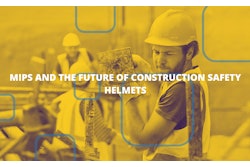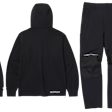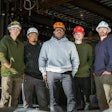
The U.S. Centers for Disease Control notes the construction industry has the greatest number of both fatal and nonfatal work-related traumatic brain injuries (TBIs) among U.S. workplaces. From 2003 to 2010, 2,210 construction workers died because of a TBI (a rate of 2.6 per 100,000 full time equivalent workers), with those deaths representing 25 percent of all construction fatalities and 24 percent of all work-related TBI fatalities among all industries during that period.
The safety helmet (also known as a hard hat) plays a critical role of protecting workers from dangers including blows to the head, object penetration, absorbing the force of impacts through a suspension system, water, fire, top-of-the-head impacts and electric shock.
Operational Risks on Construction Sites
Construction site workers face the potential of being struck by falling and flying objects or falling from roofs, ladders and scaffolds. Falls lead to more than half of fatal work-related TBIs. Research shows workers in construction companies with fewer than 20 employees were more than 2.5 times likely than those in larger companies of more than 100 employees to die from a TBI.
Workers 65 years and older were nearly four times more likely than workers 25 to 34 years to have a fatal TBI.
The TBI fatality rate was significantly higher for foreign-born than for native-born workers. Structural iron and steel workers and roofers had the highest fatal TBI rate among construction workers. The Occupational Safety and Health Administration (OSHA) regulates hard hat use in the construction industry as part of the head protection standard [29 CFR § 1926.100 Head protection – Code of Federal Regulations].
The OSHA standard refers directly to American National Standards Institute (ANSI) Z89.1 American National Standard for Industrial Head Protection consensus standards, with the latest being ANSI/ISEA Z89.1-2014 (R2019).
Safety Helmet Classifications
Construction industry helmets are designated as ‘Type I’ and ‘Type II’.
Type I helmets – a basic model traditionally used on construction sites – are designed to reduce the force resulting from a blow to the top of the head from tools, small parts, or similar items falling from a reasonable height or from making contact with an obstruction just over the head. Type II helmets are designed to reduce the force resulting from a blow to either the top or sides of the head such as could be experienced when working around moving equipment or materials with horizontal blow threats.
Side impacts are likely to cause rotational accelerations in the brain, leading to concussions among workers experiencing head trauma. Design features help retain a helmet on the head. A construction helmet retention system typically consists of a removable chin strap, important for applications where the helmet can become dislodged from the user’s head.
A suspension system including a head cradle attached to the helmet shell through four to six anchors and a suspension tightening ‘ratchet’ is another design feature.
Based on OSHA/ANSI standards, Type I and Type II construction helmets do not require the use of chin straps. While there are no design requirements related to chin straps for Type I helmets, when Type II helmets are supplied with a chinstrap, they must meet ANSI standard width, retention and elongation requirements.
In addition to type designations, ANSI also indicates electrical class designations. Class G (General) includes all-purpose, general construction helmets providing good impact and penetration protection and limited voltage protection with the hats tested up to 2,200 volts. Class E (Electrical) hard hats provide good impact and penetration protection and are tested up to 20,000 volts, suitable for electrical work in high-voltage environments. Class C (Conductive) hard hats provide good impact and penetration protection and breathability but are only used by construction workers with no risk of encountering electrical hazards. Electrical workers use Class E hard hats for protection from high-voltage shocks.
In 2021, NIOSH research found that adding an air-bubble cushioning liner to a Type I construction helmet substantially increases shock absorption from large and repeated impacts. Newer helmet designs with an additional foam layer between the belt-type suspension and the shell offered significantly more protection than basic Type I helmet designs, reducing the probability of serious head injury nearly 30 percent. NIOSH studies have also found the fall protection performance of newer helmets was substantially better than basic Type I helmets.
Looking for heavy-duty safety helmets? Check out this selection of hard hats on IRONPROS!















